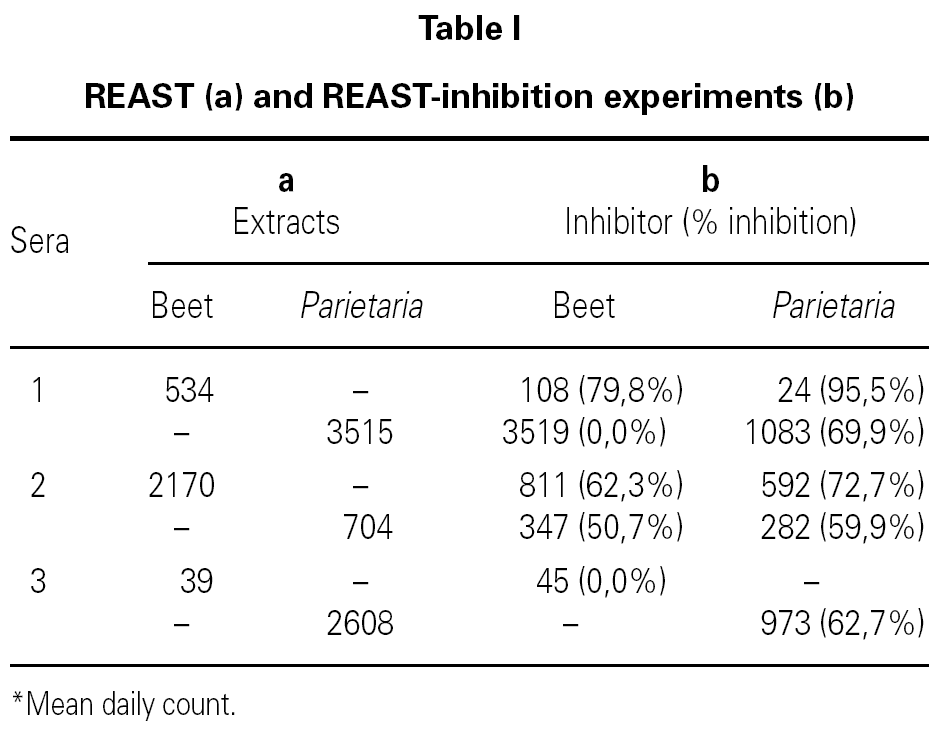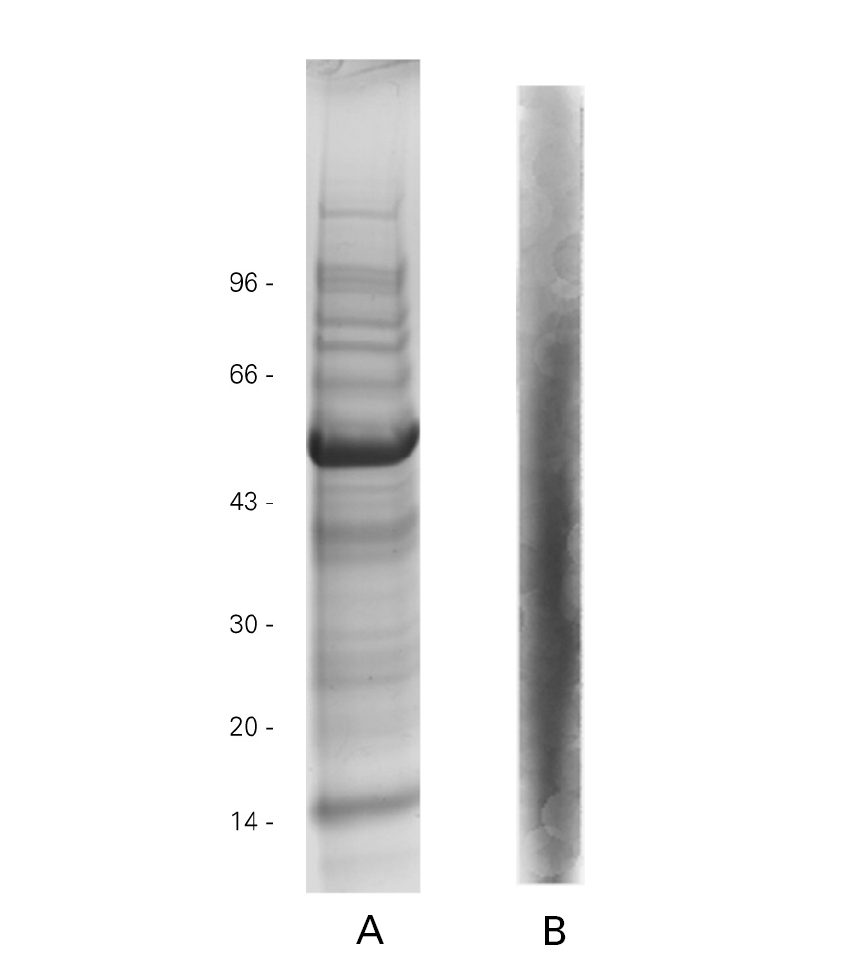INTRODUCTION
Swiss chard (Beta vulgaris L. cicla) or beet, is an appreciated vegetable belonging to the goosefoot family of Chenopodiaceae. There are some reports in literature about bronchial asthma induced by inhaled vapor of cooked beet1,2.
CASE REPORT
During a retrospective study of a group of patients with allergic rhinitis who underwent skin prick test for the common inhalant allergens and a standard panel of food allergens, we found two patients with positivity for Parietaria pollen and beet only. However, both of patients did not refer any adverse event after eating beet. Since a cross-reactivity among beet and grass pollen antigens, as well as cross-reactivity between vegetables and weed pollens of the chenopod family have been already reported3, we hypothesized a cross-reactivity between Parietaria pollen and beet and to demonstrate it, we performed some laboratory assays. A certain quantity of beet, initially washed in distilled water, was cut into little pieces and submitted to aqueous extraction (5 %w/v) for 4hrs at 4 °C before to be centrifuged. Supernatant was then recovered and its protein content determined by BioRad assay4 was 0.490 mg/ml. To prepare biotinylated extract, activated biotin were added to 2ml of beet extract, previously dialyzed against NaHCO3, 0.1M in order to achieve a ratio protein/biotin of 1:20. The material was stirred for 4hrs, dialyzed against PBS and stored at 20 °C until use.
REAST (reverse enzyme allergosorbent test), as previously described5, has been used for quantitative detection of specific IgE against both beet and Parietaria pollen extracts. Briefly, microplates coated with polyclonal (goat) anti-human IgE antibody (Kpl, Celbio, Milan, Italy) and overcoated with bovine serum albumin (BSA, 5 %) as blocking agent were used. Fifty microliters of sera diluted 1:2 was dispensed to the wells and incubated for 60 min at r.t. After washings, biotinylated beet extract or PBS were dispensed before the addition of streptavidin peroxidase diluted 1.5000 and subsequently by chromogenic substrate. Blocking solution (100 ml, HCl, 0.1 M) was used to stop the reaction and optical density (OD) of each well read at 450nm by spectrophotometer. For REAST-inhibition experiments, a pre-contact of 2hrs between serum and sample (beet or Parietaria extracts used as inhibitors) was performed before adding them into wells for 60 min. After washings, 100 μl of beet or Parietaria biotinylated extracts were added to the wells for further 60 min. Afterwards the procedure is the same described before.
As shown in table 1a, Parietaria- and beet-specific IgE were demonstrated in sera of both patients (sera 1 and 2), and Parietaria-specific IgE only were present in serum 3, used as control. A cross-reactivity between Parietaria and beet extracts was detected by REAST for serum 2, with an inhibition of 60-70 % (table 1b) while no any inhibition was observed for the other considered serum.
For SDS-PAGE profile of beet extract electrophoresis was carried out according to Towbin6. using precast Nupage Bis-Tris gel (Novex, Prodotti Gianni, Milan, Italy). For immunoblotting (IB) serum n.º 2 and serum from non allergic patient diluted 1:2 were used. Bound specific-IgE were detected by 1.200 peroxidase-conjugated goat anti-human IgE antiserum (Kpl, Celbio, Milan, Italy) in saturating buffer, using ECL Blotting Kit (Amersham, Milan, Italy) as substrate.
The SDS-PAGE profile showed the presence of a well-resolved proteic band between 43 and 66 kDa and other more diffuse. On the contrary immunoblotting experiments with serum 2 did not evidence any IgE-binding components (fig. 1 a and b).
Figura 2.--A) SDS-PAGE profile of beet extract. B) Immunoblotting experiment of beet extract using serum no. 2.
DISCUSSION
The observed difference between REAST and IB experiments for serum 2 could be due to the fact that IB technique samples must be treated with reagents which could partly modify the structure of the allergenic epitopes make them not more recognizable by specific IgE.
There are no reports in literature about sensitization to beet as food. We report the presence of beet-specific IgE in two patients and a possible cross-reactivity between Parietaria pollen and beet in one patient.
Correspondence:
Prof. Sebastiano Gangemi
Via Centonze 200 is. 98
98123 Messina Italy
Tel.: + 39 90 2212075
Fax: + 39 90 6782336
E-mail: sebastiano.gangemi@unime.it








